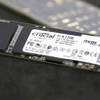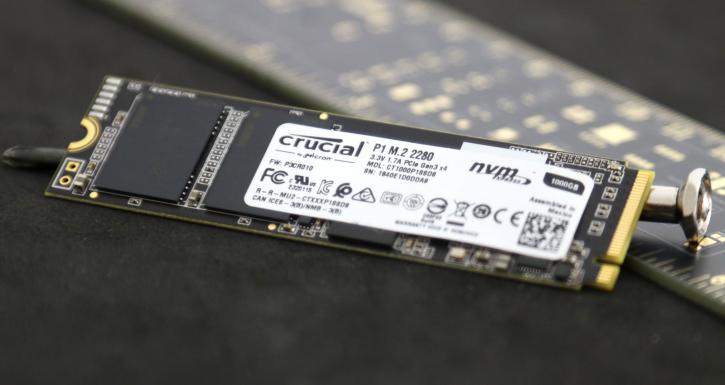Introduction
Crucial P1 1000GB M.2. NVMe QLC SSD
Crucial has been busy fabbing new NAND, in an effort to create an M.2. SSD that remains fast, versatile yet price effective they just released the P1 NVMe Solid State Drive. This is their first ever SSD released to the consumer market based on QLC NAND.
NAND flash memory (the storage memory used inside an SSD) has become cheaper thanks to the new 64-layer fabrication and this year and the next we'll see a move to QLC NAND as well. MLC writes 2 bits per cell, TLC 3 bits per cell and QLC four bits per cell. You can see both the complication and advantage here, you can store more data in the NAND cells, increasing volume sizes. But you can also see a performance hit with an increasing write bottleneck (which you can buffer with SLC cached, DRAM or Host Memory Buffer on NVMe). Endurance is also a factor, there should be less of it however with modern age wear and care technologies it still is not an issue. We'll talk a bit more about that on the next page though.
An SSD targeted towards gaming laptops and high-end PCs, it's thin and is available in 500 and 1000 GB volume sizes. This SSD series offer peak read performance of up to 2000 MB/s and a peak write speeds up to 1700 MB/s. Small side note, performance will differ with different volume sizes, we'll put that into a table on the next page, but smaller versions use less NAND channels and thus have slower writing. That said, whatever size you choose, the perf will be great. The random performance rated up-to 170K random read IOPS and up to 240K write IOPS. Being M.2., you do need a modern motherboard with capable NVMe supported M.2 (PCI-Express Gen 3.0 x4 (and not x2) connected) interface, please do check out your motherboard manufacturer for that. But ever the past year or two all Intel and AMD chipset released in the mainstream to high-end class support it very well. M2 is interesting stuff, these smaller form factors storage units are evolving from being "just as fast" as a regular SSD towards double, tripling, heck... even quadrupling that performance. It comes in a different package, M.2. The M.2 interface is so much more capable as it can deal with way more bandwidth using PCI-Express lanes. As such, M.2 solutions are intended for enthusiast class motherboards. The series M.2 SSDs are a breathtaking series of storage technology as they offer enthusiast class performance yet remain reasonable in pricing depending on NAND type.
Proper volume SSDs at acceptable prices with good performance and low access times. Not one test system in my lab has an HDD anymore, everything runs on some form of NAND storage, while I receive and retrieve my bigger chunks of data from a NAS server here in the office. The benefits are performance, speed, low power consumption, no noise, and good reliability.
Crucial P1 M2 SSD with Silicon motion SM2263 controller and QLC written Micron NAND Flash


